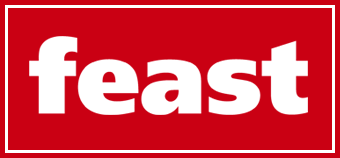A well-structured IT outsourcing strategy enables businesses to optimize performance, control costs, and access specialized expertise. Companies across industries, including those collaborating with IT providers like LG Dallas, recognize the advantages of outsourcing IT functions as a tool to enhance efficiency and focus on core business objectives. Strategic IT outsourcing fosters operational resilience, improves scalability, and ensures continuous technological advancement.
Understanding IT Outsourcing
IT outsourcing involves delegating specific technology-related tasks or functions to external service providers. Businesses outsource various IT services, including software development, cloud computing, cybersecurity, infrastructure management, and technical support. This approach allows organizations to leverage industry expertise, reduce overhead costs, and accelerate project timelines.
Key Benefits of IT Outsourcing
Cost Efficiency
Outsourcing IT services eliminates expenses related to in-house recruitment, training, and infrastructure. Companies can work with skilled professionals without incurring high operational costs. Outsourcing partners often provide flexible pricing models, allowing businesses to scale their IT spending based on demand.
Access to Expertise
Outsourcing firms employ specialists with extensive experience in diverse technologies. This access ensures businesses receive high-quality solutions without investing in continuous upskilling for internal teams. With expertise spanning multiple industries, IT outsourcing providers deliver tailored solutions to meet specific business needs.
Enhanced Scalability
Outsourcing allows companies to scale IT operations efficiently. As business needs evolve, organizations can quickly expand or reduce their IT capabilities. This flexibility is particularly valuable in industries experiencing rapid technological advancements or fluctuating market demands.
Risk Mitigation
IT outsourcing helps businesses manage risks associated with technology investments. Service providers offer built-in disaster recovery and cybersecurity measures, ensuring operational continuity and data protection. Compliance with industry regulations is also streamlined, as outsourcing partners stay up to date with evolving legal and security requirements.
Accelerated Innovation
Working with external IT experts enables businesses to adopt emerging technologies swiftly. IT outsourcing partners bring innovation to the table, offering solutions that drive digital transformation. By incorporating advanced tools and methodologies, companies maintain a competitive edge without diverting internal resources.
Commonly Outsourced IT Services
Businesses outsource a wide range of IT functions depending on their objectives. The most frequently outsourced services include:
- Software Development – Custom application development, enterprise software solutions, and web applications.
- Cloud Computing – Infrastructure-as-a-Service (IaaS), Platform-as-a-Service (PaaS), and Software-as-a-Service (SaaS) solutions.
- Cybersecurity – Network security, threat monitoring, and compliance management.
- IT Support and Maintenance – Helpdesk services, technical support, and system monitoring.
- Data Management – Database administration, analytics, and cloud storage solutions.
- Infrastructure Management – Server management, networking, and IT asset monitoring.
Building a Successful IT Outsourcing Strategy
Define Business Objectives
A clear understanding of outsourcing goals is fundamental to success. Companies should identify which IT functions to outsource based on cost-benefit analysis, operational priorities, and internal capabilities. Defining key performance indicators (KPIs) ensures measurable outcomes.
Choose the Right Outsourcing Model
Several outsourcing models exist, each suited to different business needs:
- Onshore Outsourcing – Partnering with service providers within the same country.
- Nearshore Outsourcing – Collaborating with vendors in neighboring countries.
- Offshore Outsourcing – Engaging with service providers in distant locations for cost advantages.
- Multisourcing – Combining multiple outsourcing models to optimize service delivery.
Selecting the right model depends on budget constraints, communication preferences, and regulatory considerations.
Evaluate Potential Vendors
Thorough vendor selection ensures seamless collaboration. Businesses should assess providers based on:
- Industry reputation and experience
- Client testimonials and case studies
- Technical expertise and certifications
- Security protocols and compliance measures
- Cost structure and service-level agreements (SLAs)
Conducting pilot projects or initial consultations helps gauge compatibility before finalizing contracts.
Establish Clear Communication Channels
Effective communication minimizes misunderstandings and aligns project expectations. Setting up structured reporting mechanisms, scheduled check-ins, and collaborative tools enhances transparency. Language barriers and time zone differences should be considered when choosing international vendors.
Monitor Performance and Compliance
Regular performance assessments keep outsourcing partnerships on track. Businesses should define reporting structures, track KPIs, and conduct periodic reviews. Compliance with data protection regulations, such as GDPR and HIPAA, must be maintained to mitigate legal risks.
Overcoming IT Outsourcing Challenges

Data Security Risks
Cybersecurity concerns remain a primary challenge in IT outsourcing. To mitigate risks, businesses should:
- Implement strict data access controls.
- Require compliance with industry security standards.
- Use encrypted communication channels.
- Establish robust cybersecurity agreements in contracts.
Quality Control Issues
Differences in work culture and quality standards can impact deliverables. Businesses should:
- Define clear project milestones and review mechanisms.
- Conduct periodic audits of outsourced work.
- Foster a collaborative relationship with vendors to align quality expectations.
Hidden Costs
Unexpected costs may arise due to scope changes or additional service requirements. To manage expenses:
- Define project scope and budget explicitly in contracts.
- Review service-level agreements for cost implications.
- Plan for contingencies in financial projections.
Communication Barriers
Time zone differences and language challenges can create communication gaps. Strategies to improve collaboration include:
- Utilizing project management tools for real-time updates.
- Scheduling regular meetings to align expectations.
- Assigning dedicated points of contact for streamlined communication.
The Future of IT Outsourcing
Technological advancements continue to reshape IT outsourcing. Emerging trends include:
- Artificial Intelligence (AI) and Automation – AI-driven automation enhances IT service efficiency and reduces manual intervention.
- Cloud-First Strategies – Businesses increasingly prioritize cloud-based outsourcing solutions for enhanced flexibility.
- Cybersecurity Focus – Growing cyber threats necessitate advanced security measures in outsourcing partnerships.
- Hybrid Outsourcing Models – Companies blend in-house teams with external partners for greater agility.
As the demand for digital transformation accelerates, IT outsourcing will remain a strategic enabler of operational excellence. Businesses that adopt structured outsourcing strategies gain a competitive advantage through cost savings, innovation, and enhanced productivity.
Final Thoughts
Leveraging IT outsourcing effectively requires meticulous planning, strategic vendor selection, and continuous performance monitoring. When executed well, IT outsourcing enhances efficiency, fosters innovation, and drives long-term business success. Organizations that approach outsourcing with clear objectives and robust management frameworks unlock substantial value while staying ahead in the evolving technology landscape.



